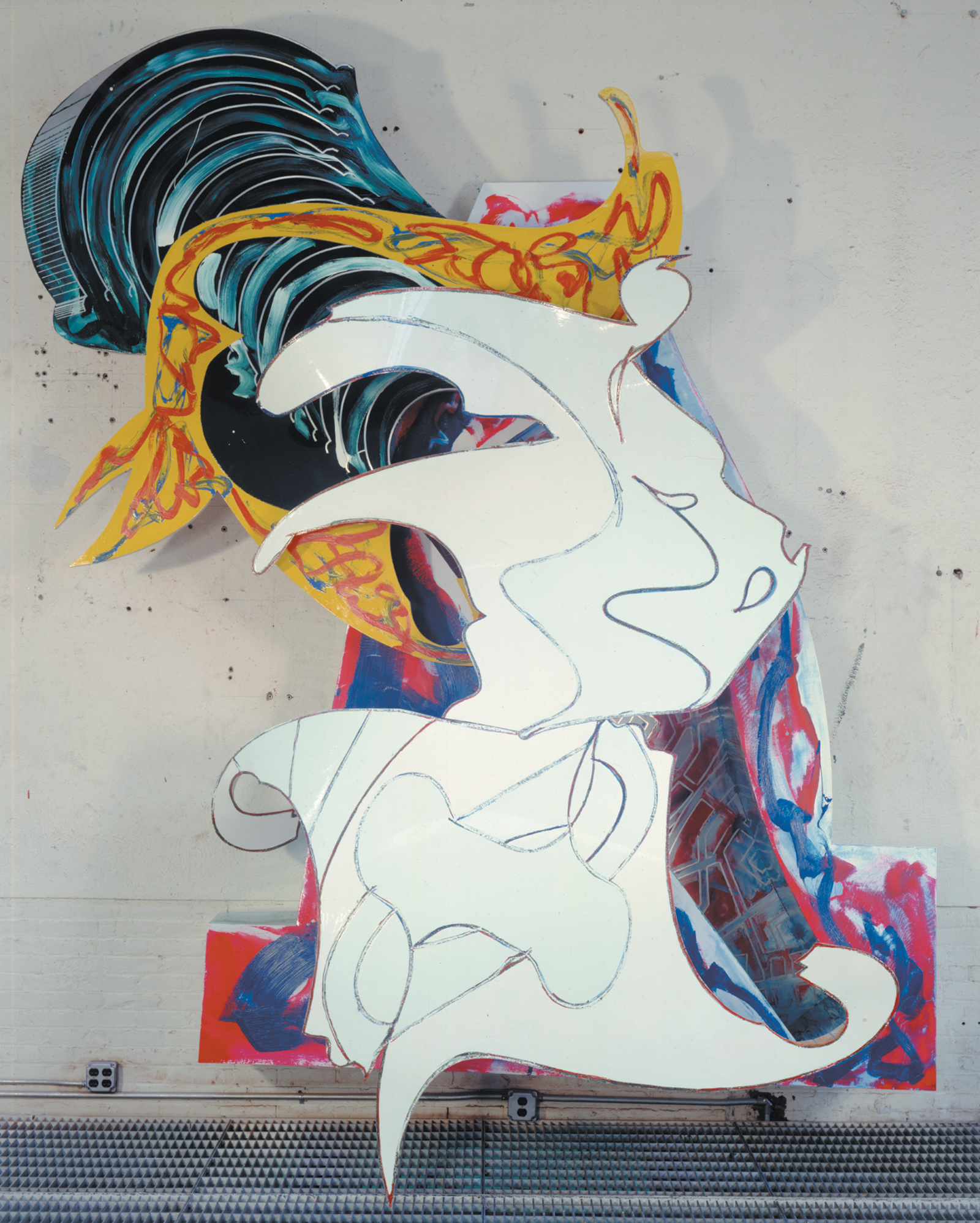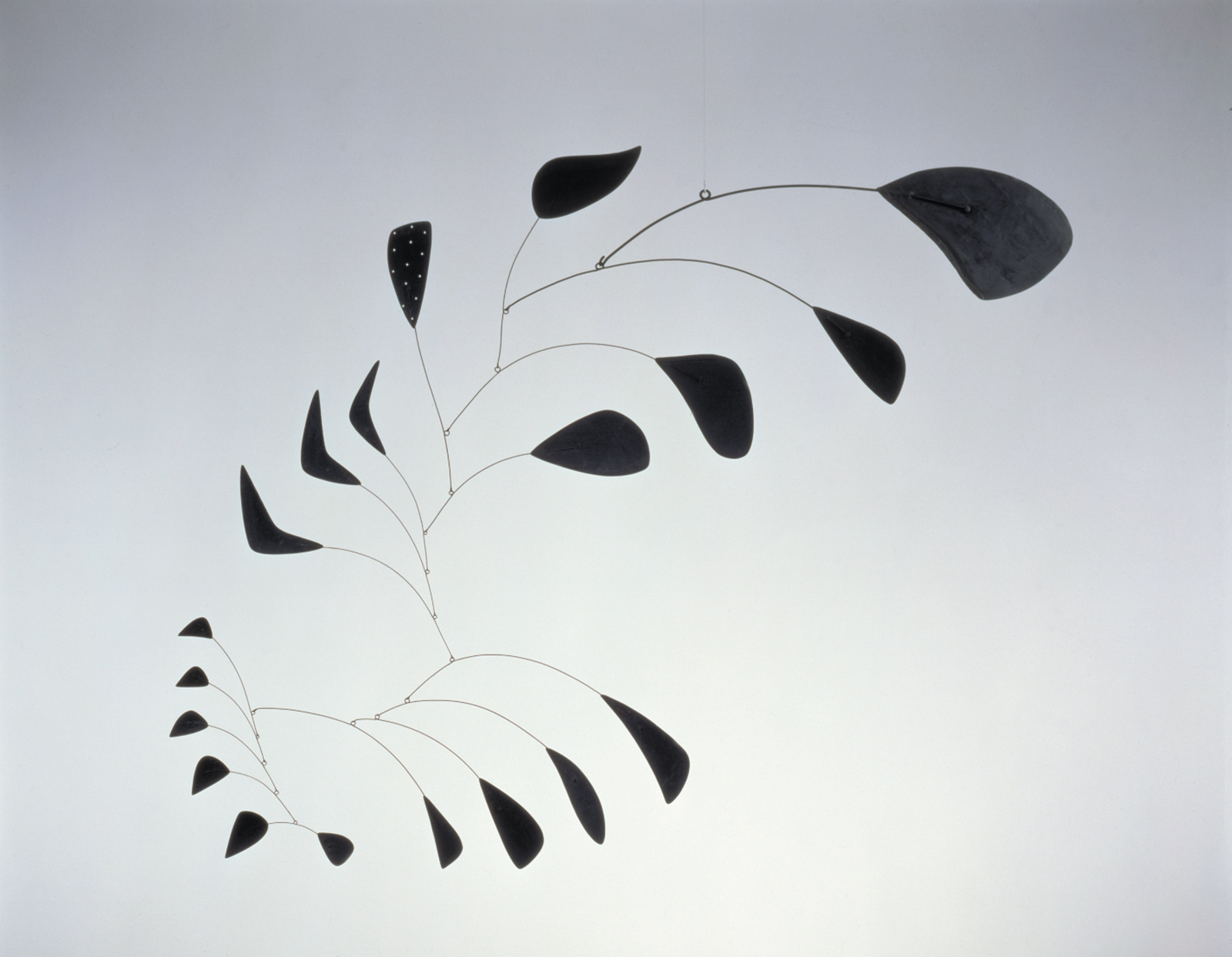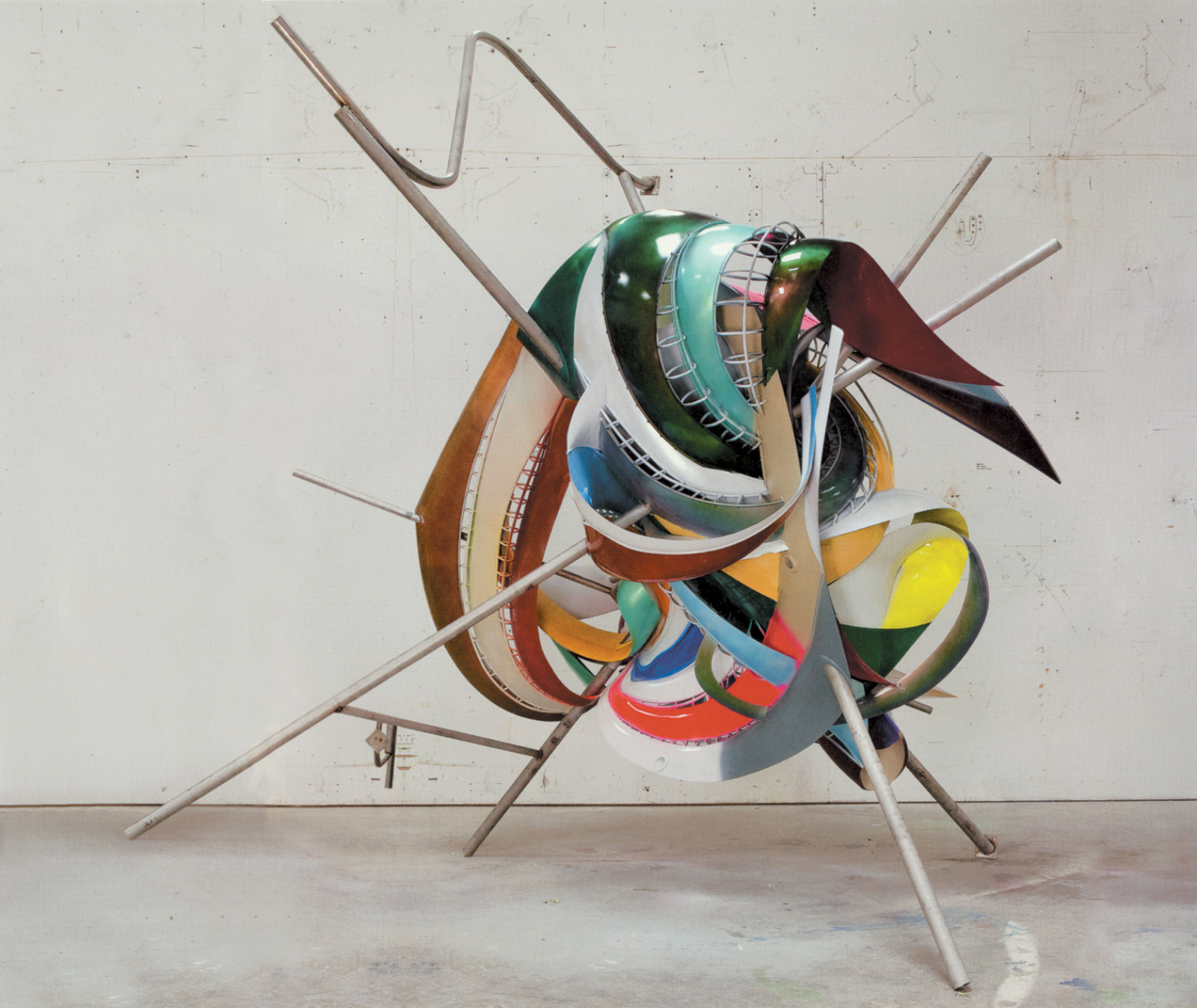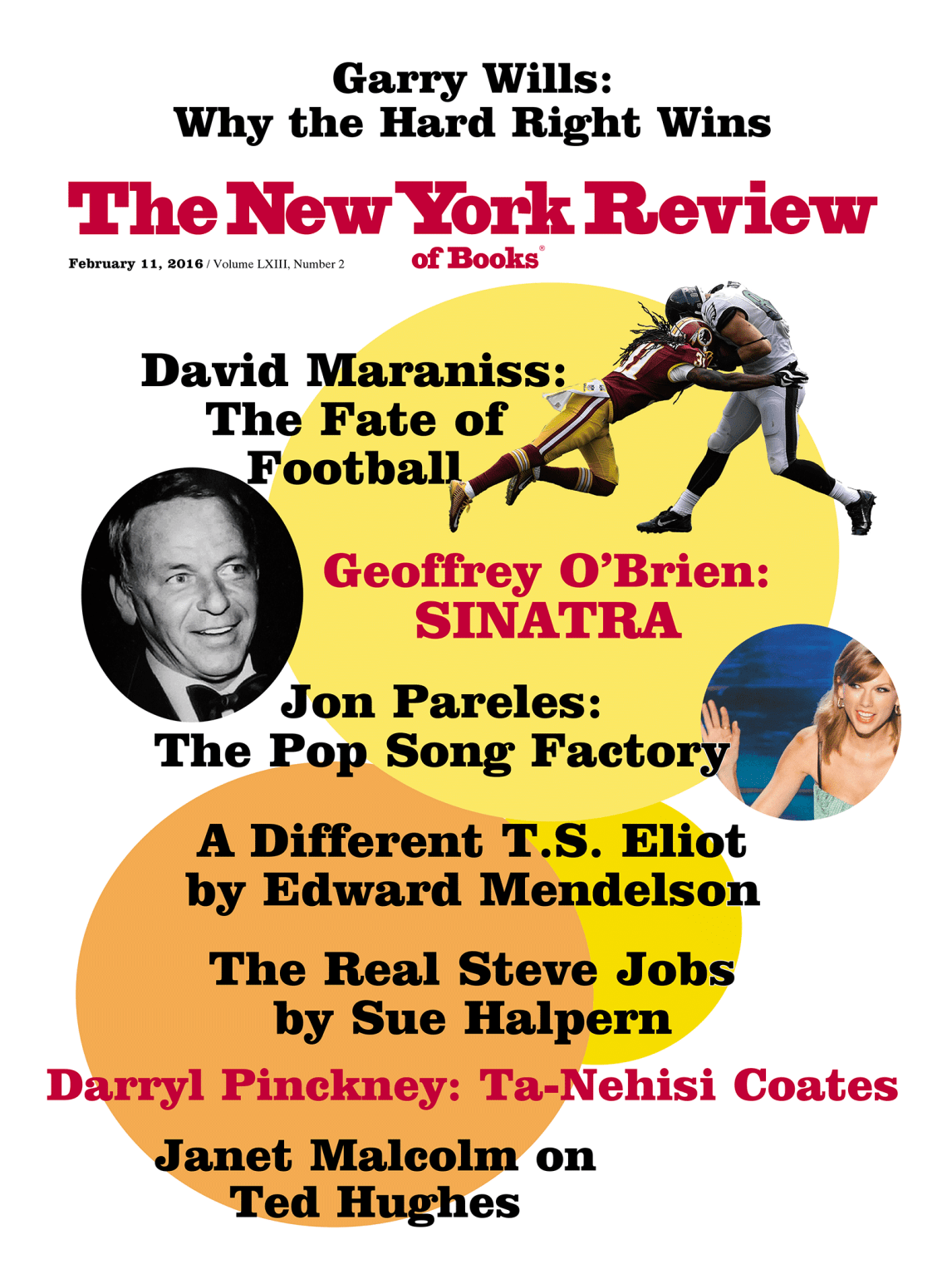Picasso, a painter who from time to time turned to sculpture, was neither the first nor the last artist to explore the rival attractions of two very different disciplines. Five hundred years ago, Leonardo da Vinci, who mastered the art of sculpture as well as the art of painting, delighted in comparing them. He argued that painting “involves greater mental deliberation and is of greater artifice and wonder.” Sculpture, the lesser art, was “nothing other than it appears to be.” Even if we take exception to Leonardo’s judgment—and in his own time Michelangelo certainly did—his ideas can provoke further thought and investigation. All artistic possibilities are not created equal. The challenge is to figure out what can be done with what—and when, and how, and why. Especially in modern times the literalism of sculpture, what Donald Judd called its “specificity,” has been seen by some as a great strength, while the “artifice” of painting has rendered it suspect.
The debates about the values of various arts and materials—which Leonardo and his contemporaries framed by what they called paragone, or comparisons—are intellectual pursuits and also a source of artistic experimentation. Certainly, they have been important to many of the artists who have worked at one time or another in both two and three dimensions and range from Verrocchio, Leonardo, Michelangelo, and Bernini down to Picasso, Matisse, Giacometti, and Calder. Curators and critics, however, sometimes prefer not to engage with these invigorating rival claims, perhaps because any attempt to characterize or evaluate can be dismissed as judgmental or elitist, an effort to draw distinctions at a time when what can look like the gray zone of mixed media or multimedia is embraced by an increasing number of artists.
“Picasso Sculpture,” at the Museum of Modern Art, would have greatly benefited from the inclusion of some significant paintings, so that museumgoers could see how Picasso used the possibilities of one art to embolden him in the other.* And the Frank Stella retrospective at the Whitney Museum in New York is not helped by the insistence of Stella and many of his supporters on continuing to refer to most of his three-dimensional constructions as paintings when by many if not most definitions they are sculptures.
The old arguments about the rival claims of painting and sculpture may feel exhilarating now, when the critique of distinctions that was central to modernism has in many circles deteriorated into a philistine belief that anything goes. In her little book about Picasso, Gertrude Stein proposed that in the twentieth century “the framing of life, the need that a picture exist in its frame, remain in its frame was over,” and that “pictures commenced to want to leave their frames.” That extraordinary statement—Stein was a finer critic of the visual arts than is generally credited—could well be emblazoned above the entrances to both “Alexander Calder: Performing Sculpture,” at Tate Modern in London, and the Stella retrospective at the Whitney.
For Stein, Cubism, with its break-up of the consistent illusionism of Renaissance painting, was the answer to life’s refusal to any longer be framed. Calder, a generation younger than Picasso and Braque, might be said to have gone Cubism one better when in the early 1930s he brought the element of time into his sculpture; in the 1920s and 1930s many believed that time was the fourth dimension. As for Stella, born in 1936—fifty-five years after Picasso and thirty-eight after Calder—he has worked to reclaim the illusion of the third dimension for the two-dimensional world of painting, and has ultimately done so by literally pushing painting into three dimensions.
Although the dream of merging painting and sculpture—and even uniting them with theater, dance, and music—is often seen as prototypically modern, it is very old. The English diarist John Evelyn, in Rome in 1644, commented that Bernini, celebrated as a painter and architect as well as a sculptor, had recently given “a Publique Opera…where in he painted the seanes, cut the Statues, invented the Engines, composed the Musique, writ the Comedy & built the Theater all himselfe.” In more recent times, a merger of the arts, often associated with Wagner’s concept of Gesamtkunstwerk, was a preoccupation of the Ballets Russes, the Russian Constructivists, the artists of the Bauhaus, and other elements in the European avant-garde.
“Alexander Calder: Performing Sculpture,” the first major Calder show in London in many years, emphasizes what the curators view as the artist’s genre-crossing experiments; it has been organized by a team of curators, overseen by Achim Borchardt-Hume, and including Ann Coxon and Vassilis Oikonomopoulos. A room is devoted to Calder’s relief sculptures of the 1930s. Here, with brilliantly colored biomorphic and geometric forms either attached to or suspended in front of rectangular panels, Calder sets painting on a march into the third dimension. These works also suggest maquettes for abstract theatrical productions. Calder’s theatrical instincts, most familiar to museumgoers through the Cirque Calder that he began performing for small audiences in Paris in the late 1920s, pretty soon brought him into contact and collaboration with figures ranging from Martha Graham and Léonide Massine to Virgil Thomson.
Advertisement
Among the theatrically inflected works at Tate Modern are Small Sphere and Heavy Sphere (1932–1933), with two wooden balls striking various objects for both visual and sonic effect; a group of mechanized four-part compositions, studies for what Calder sometimes referred to as ballets without dancers and hoped to produce on a large scale for the 1939 New York World’s Fair; and several mobiles from the late 1940s and early 1950s in which unpainted metal plates function as gongs. Tate Modern also sponsored the first performance in a generation of Calder Piece, a composition by Earle Brown (first performed in 1967) built around a standing mobile Calder created for the occasion, the mobile functioning as both an instrument that the four percussionists strike from time to time and a sculptural score from which the musicians derive some of their decisions as to what to play when.
In the couple of decades leading up to his death in 1976 at the age of seventy-eight, Calder became such an immensely popular figure that people pretty much lost track of the daringly experimental nature of nearly everything he ever did. One might say of Calder, as Rilke said of Rodin, that “fame is no more than the sum of all the misunderstandings that gather around a new name.” The Tate Modern show is one of several recent attempts to more accurately align Calder with the most advanced directions in modern and contemporary art. He is linked with controversies about “objecthood” and “theatricality” as they evolved in the writings of Donald Judd, Michael Fried, and Rosalind Krauss. Some may see a connection with more recent discussions about “performativity,” arguing that the essentially kinetic nature of Calder’s art reimagines sculpture as an act of aggression and forces the audience into a new relationship with art.
All such efforts to see Calder in his art-historical setting build on the seminal 1998 retrospective organized by Marla Prather at the National Gallery in Washington, which reaffirmed Calder’s vital place in a sculptural avant-garde that includes the early kinetic work of Marcel Duchamp, Naum Gabo, and Lásló Moholy-Nagy as well as the openwork sculpture of Picasso and Julio González. Calder’s move from the champagne wit of his early wire sculptures of athletes, animals, and friends to the immaculate austerity of his first abstract sculptures was an extraordinary imaginative leap. That he had, by the time of his 1943 retrospective at the Museum of Modern Art, opened a new era in the history of sculpture is gradually becoming a matter of general agreement.
The Tate show, by no means a full retrospective, concludes with Black Widow, an immense mobile from 1948 that has for decades hung in the Instituto de Arquitetos do Brasil in São Paulo. Nineteen black forms—petals, leaves, and disks—are arranged in syncopated pairs to create a spiraling cascade dropping down some ten feet from the ceiling. This is quintessential Calder, a subtle, confident drama achieved with such elegance and ease that a museumgoer can miss how profound a response it offers to Rodin’s destabilization of classical sculpture.
If Rodin, as Rilke argued, was the first to roil the surface of sculpture, making “this differently great surface, variedly accentuated, accurately measured, out of which everything must rise,” Calder’s finest mobiles liberate that surface from any conventional idea of volume: the mobile’s metal elements move freely through space, making and unmaking vectors and volumes as they go. Calder’s father, a distinguished American sculptor, was a great admirer of Rodin, a fact that only underscores one’s sense that Calder was fully aware of his work. But we need not draw any direct line from Rodin to Calder in order to see that the unsettling of sculpture, already far advanced in the churning, topsy-turvy drama of Rodin’s Gates of Hell, reaches a climactic poetic serenity in Calder’s floating, meandering mobiles.
When Duchamp first dubbed Calder’s kinetic objects mobiles, at the beginning of the 1930s, their movements were mostly crank- or motor-driven, and thus predictable. It was later in the decade that Calder perfected the more fluid mechanics of his wind-driven mobiles, with elements and groups of elements unfolding and unfurling in different directions at different rates. Calder’s determination to introduce what amounted to a new naturalism into abstract art was surely fueled by his experiences living in the country, after he and his wife moved back to the United States from France in 1933 and purchased an old farmhouse in Connecticut. Calder’s influence, far wider than generally acknowledged, helped shape the kinetic work of artists from Jean Tinguely to George Rickey, and yet in actualizing sculpture’s potential for movement he arrived at a lyric power that no other artist has been able to match.
Advertisement
We have to go back to Bernini to find a sculptural revolution as thoroughgoing as Calder’s. Bernini, with his chapels dedicated to Saint Teresa and the Blessed Ludovica, reimagined the Roman Catholic altar as a dramatic stage on which sculpture became part of a grandiose ensemble, a theatrical event inhabiting a time outside of time. Calder, with mobiles such as Black Widow, Vertical Foliage (see below), and Gamma, turned a sculpture into a dancer, an abstract marionette that recalls the marionettes in Kleist’s famous essay on the puppet theater, with their intimations of the sublime. Like Bernini’s chapels, Calder’s mobiles are unprecedented imaginative achievements. I am reminded of Walter Benjamin’s remarking apropos of Proust that “all great works of literature found a genre or dissolve one.” Calder’s mobiles certainly found a genre. They may dissolve it as well.
Leonardo saw sculpture as involving greater physical exertion than painting, which he felt left the painter free to pursue more refined mental explorations. What he would not admit was the extent to which the sculptor’s physical exertions channel and heighten his mental exertions. This is certainly the case in Calder’s work, where the power and delicacy with which various thicknesses of wire and sheet metal are shaped and joined are nothing less than astonishing, with the physical elegance of the construction conveying a mental elegance as well. Far from being inhibited by the artisanal nature of his work, Calder finds in his abiding commitment to his materials, to what Rilke might have called the thingness of things, a physicality that insulates him from the arid intellectualism that all too often characterizes kinetic art.
Leonardo understood painting’s artifice as predicated on the framing rectangle, precisely what Stein believed modern painting had to escape. If that leaves us with a paradox, it is one that Frank Stella has embraced with unfailing panache. In Stella, we have the curious case of an artist who merges the speculative intellectual spirit of a philosopher-painter with the aggressive muscularity of a sculptor whose taste runs to industrial-strength technologies. Stella and his interpreters have spared nothing in their efforts to make this merger look like the most natural thing in the world.
Back in 1987, when the curator William Rubin mounted the second of two Stella shows at the Museum of Modern Art, he argued that Stella’s “whole career has been concerned with expanding the boundaries and possibilities of the pictorial, rather than of the sculptural” and that “we need some clarity on the semantic side if we are going to be able to proceed.” But from the evidence of the writing in the catalog of the Stella show now at the Whitney, which has been organized by Michael Auping and Adam Weinberg, we are no closer to clarity. Auping speaks of “sculptural paintings” and later seems to throw up his hands, announcing that “whether some of Stella’s works are paintings or sculptures is, at the end of the day, a moot point.”
Stella emerged in 1959, in the Museum of Modern Art’s “Sixteen Americans” exhibition, with paintings that eschewed all illusionism, their somber blacks broken by narrow strips of bare canvas that were dubbed pinstripes. These canvases were nearly as reduced as Ad Reinhardt’s final paintings, but Stella was in his twenties and certainly not ready to call it a day; he has spent the rest of his life—he turns eighty this year—backing away from those first avowals. Going through the Stella retrospective, I found myself impressed by the artist’s fearless embrace of so many of the problems and possibilities of modern art, but despite the extravagance, the playfulness, even the fantastical quality of much of the work, I cannot say that anything held my imagination. In the 1960s Stella aimed to bring a new dynamism into his painting with shaped canvases, sometimes elaborately shaped. In the 1970s, he began literally layering the shapes, creating what amount to relief sculptures, until in recent years his work not only projects many feet from the wall but also sometimes actually rests on the floor.
Whatever the considerable passion that has gone into the planning of Stella’s works in a bewildering range of materials—wood, magnesium, aluminum, stainless steel, fiberglass, and something called Protogen RPT (see below)—the results are overly calculated, solutions to equations. When great artists present us with puzzles, the puzzles work on the imagination because the artists themselves are caught up in the mystery. The trouble with Stella may well be that he believes he has solved all the mysteries. He may have an overly specific idea about how we are going to respond to his work. Whether he confronts us with angular planes rendered in sleekly carpentered wood or an explosion of metal parts covered in day-glo paint and glitter, he so meticulously plots the path our eyes follow that little room is left for the sense of discovery that generates aesthetic experience. For the most part, Stella’s constructions remain illustrations, ideas about art rather than works of art in themselves.
None of this, however, can detract from the extraordinary interest of Stella’s ideas. When he presented the Norton Lectures at Harvard in the 1980s—they were published as Working Space—he launched a sustained argument against what he saw as the aridness of contemporary abstract painting, urging artists to confront “the difficulty that abstraction has today in relating to the past” and to broaden what struck him as “abstraction’s constricted sources.” Stella explores the dramatic realism of Caravaggio, in whose canvases the dynamic thrusts of the figures define a new kind of pictorial space. And he finds in Caravaggio’s muscular revitalization of Renaissance spatial ideas a model or at least a provocation for his own efforts to push the pictorial drama of Mondrian and Pollock in new directions. Working Space is a bravura performance. The prose is casual, the appeal to the audience immediate and incisive, so that we stick with Stella’s whirling mind as he moves from Raphael and Titian to Kandinsky and Morris Louis.
Picasso and Calder make appearances in Working Space. And if there is something just a little bit too clever in his use of these artists, this reflects his tendency to regard all art as a series of problems and solutions. The mention of Calder is fleeting—a dazzling grace note. Stella is looking at Caravaggio’s painting of David holding the head of Goliath, and he comments on how the
glances from the eyes of David, Goliath, and Caravaggio [are] perpetually reactivated in the eyes of successive viewers, glances whose energy turns the perfectly poised head of Goliath suspended from David’s hand the way air currents almost automatically turn a Calder mobile suspended from its fixed point.
Might we deduce from this that the shifting arrangements in Calder’s mobiles are one among many sources for Stella’s frenzied, multidirectional constructions?
As for Picasso, Stella observes of his return after World War I to strongly volumetric forms in some neoclassical paintings that he was wondering how he could “see a future for the broken, empty, blank monumentality of imperial statuary.” Stella is right to insist on the significance of Picasso’s embrace of solid volumes in the wake of Analytical Cubism’s dissolution of volume. But when he wonders if some of Picasso’s contemporaries might have seen in one of these neoclassical figures a “stony, academic goddess gazing out over an impossible future,” I suspect Stella is confusing Picasso’s melancholy figure with his own strenuous reflections.
In Working Space, Stella refuses to accept the ever-narrowing options that some artists and critics, Clement Greenberg among them, have argued are the fate of modern painting and sculpture. Stella’s black paintings, although not endorsed by Greenberg, were closely aligned with the ideas Greenberg proposed in his 1960 essay “Modernist Painting,” where twentieth-century artists were said to focus on “that which was unique and irreducible in each particular art,” to discover “the effects exclusive to itself”—which in the case of painting were “the flat surface, the shape of the support, the properties of the pigment.” From this vantage point, Stella’s move into increasingly complex configurations and finally into the third dimension can look like apostasy, though he doesn’t necessarily see it that way. Of course Stella has hardly been alone in rejecting an overly narrow definition of modernism, a view that willfully overlooks the taste for narrative, metaphor, and illusionistic complication that is part and parcel of the work of Picasso, Matisse, and even Mondrian in his final Boogie Woogie paintings. We can find parallels of one kind or another to Stella’s evolution in the abstract paintings of Al Held, with their push into a deep fictive space, as well as in the complex naturalistic illusionism of representational painters including William Bailey, Louisa Matthíasdóttir, and Philip Pearlstein.
What makes Working Space such an invigorating read is Stella’s insatiable curiosity about the history of art, his conviction that the way forward always involves a spiraling back. Moving through the Whitney show, a museumgoer cannot help but admire the wealth of Stella’s sources and references, which include the angular dramaturgy of Russian Constructivism, the luxuriantly colored plumage of exotic birds, the mathematician’s topological surfaces, and the gonzo romanticism suggested by titles such as Moby-Dick and Raft of the Medusa. There is something mighty appealing in the extravagant pluralism of Stella’s sources and materials, and in mounting this exhibition the Whitney must have hoped that Stella’s swaggering reach and unabashed eclecticism would appeal to an art world in which modernism’s austerities, if recognized at all, are now seen as but one choice among many. If Stella’s nearly half-century-long revolt against austerity remains strangely equivocal, a Herculean struggle offering little catharsis, this only serves as a reminder that working your way out of a corner is not the same as finding a way forward.
There seems too much of the strategist about Frank Stella. In this he is hardly alone. Contemporary artists, critics, and curators spend an inordinate amount of time worrying about how to situate themselves. Feelings are trumped by alignments and networks. Facing art directly gives way to interfacing. Around both “Picasso Sculpture” at MoMA and “Alexander Calder: Performing Sculpture” at Tate Modern there is some sense of the need for a hook, a strategy to persuade the educated public of the relevance of these artists.
Much has been made of Picasso’s penchant, especially in the years after World War II, for combining found objects in unexpected ways, and how this might forge some sort of connection with the multimedia artists of our own moment. As for the Calder show, everybody can see that its title, “Performing Sculpture,” aims to relate Calder to the turn toward performances of one sort or another that now preoccupies so many museum officials. I would not be surprised if somebody were getting ready to position Calder as a precursor of Marina Abramović. All these arguments for relevance leave me with a renewed respect for the virtues of irrelevance.
If modern sculpture, as Rilke argued on behalf of Rodin, replaced the inviolable integrity of the classical figure with a more open-ended fascination with surfaces, with things, with objects, perhaps we have only begun to grasp the possibilities. Donald Judd’s one hundred mill aluminum boxes in Marfa, Texas, and Richard Serra’s enormous steel Torqued Ellipses fulfill a part of the promise of Rilke’s apostrophe to the glory of things, and do so on a monumental scale. But to look back to the sculpture of Rodin, Picasso, and Calder is to see that the rejection of the classical figure yielded results far stranger, more ambiguous, and anomalous than anything to be discovered in the work of Judd or Serra, however fine it is.
Could it be that the possibilities of modern sculpture have been less widely explored than those of modern painting? This helps to explain why Frank Stella, with his surgically acute intelligence, while insisting that he remains a sort of painter, has pursued what amounts to a career as a sculptor. Long ago, Leonardo observed that “the sculptor says that low relief is a form of painting” and countered that “the art of low relief is a mixture of painting and sculpture.” Rodin’s Gates of Hell is just such a messy mixture. Surely the promise of such mixtures remains to be fulfilled.
—This is the second of two articles.
-
*
See my “In the Sculptor’s Studio,” The New York Review, January 14, 2016. ↩





